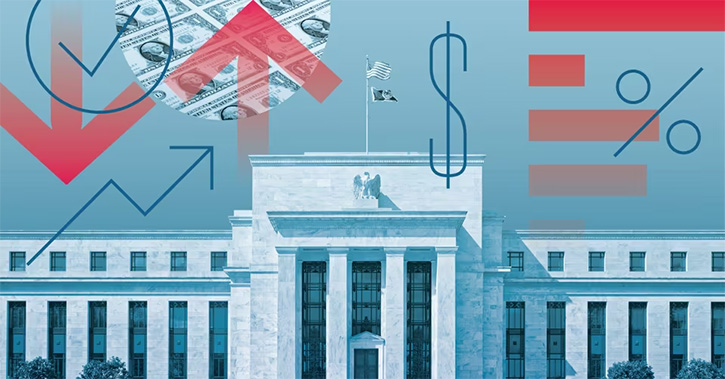Standard deviation is fairly intuitive: It simply measures the variability of a fund's total returns around its average total return over a given period. In most cases, one would expect that approximately 68 percent of the time, a fund’s returns will fall within one standard deviation of its average return, and that it would fall within two standard deviations about 95% of the time.
Take New Star European Growth’s accumulation shares as an example: A B&advisor=&lastpage=Quickrank&lastpageURL=%2Fquickrank%2Fdefault%2Easpx%3Fsearch%3Dnew%2Bstar%2Beuropean">quick check
In contrast, New Star Fixed Interest Unit Trust’s income shares have a three-year annualised return of 9.60% and a standard deviation of just 2.83% over the same period, making it a much more appealing offering for cautious investors (as one would expect from a sterling diversified bond fund). You can use Morningstar.co.uk’s Fund Selector tool to search for funds with standard deviations that are below-average for their respective categories.
BetaBeta is another commonly cited risk statistic. It's a bit more complex than standard deviation, but can be summarised as the sensitivity of a fund's returns to movements in a specified benchmark. By definition, the benchmark (for example, the FTSE 100) has a Beta of 1.00.
That might not be intuitive, but it’s pretty straightforward in practice. If a fund has a beta of 1.2, this simply means that its return is expected to be 20% better than the benchmark’s in up markets, and 20% worse than the benchmark's in down markets. If it has a beta of .80, then it is expected to deliver only 80% of the benchmark's return in up markets, but is also expected to have only 80% of the benchmark's losses in down markets. A fund with a beta of one is expected to match the benchmark's movements in up and down markets. Like standard deviation, then, a higher beta implies greater risk, though in this case, the risk is that the fund’s returns will vary by an increased amount from the fund's benchmark.
Limitations of Standard Deviation and BetaBoth standard deviation and beta have one inherent limitation in common--they are statistical measures based on a fund's past performance. As such, they may well fail to capture risks that are in the fund's current portfolio that haven't impacted the fund's performance in the past. For example, a fund that has typically been well diversified across market sectors in the past, but that now has 60% of it s assets in technology stocks would be expected to behave quite differently in the future than it has in the past.
Beta is also limited by the relevance of the benchmark selected. If the fund is not highly correlated with the benchmark, than the beta calculated relative to that benchmark becomes less meaningful. One can evaluate this quickly by checking a fund's R-squared relative to the benchmark in question.* R-squared is expressed as a value between 0 and 100, with 100 indicating a strong correlation, and 0 indicating no correlation at all. If a fund’s R-squared is high, say above 80, then beta should be a relatively strong indicator of a fund's past behaviour as outlined above. As R-squared falls, however, beta loses its meaning as a risk indicator.
It's also well worth emphasizing that since beta is defined relative to a market index, it is not a measure of the volatility of returns in an absolute sense. If the selected benchmark is volatile (say a sector index, for example), then a fund could have a low beta relative to that benchmark, but still have extremely volatile returns on an absolute basis.
A Real World Example:Invesco Perpetual Latin American Fund
Invesco Perpetual Latin American Fund's Risk and Rating page shows that it has a mean three-year annualized return of 69.12% and a standard deviation over the same period of 23.32%. By this measure, the fund is very volatile, indeed. It suggests that the fund’s returns can swing in either direction by substantial amounts.
On the other hand, the fund’s beta is just 1.06, suggesting that we can expect its returns to be only slightly more variable than its benchmark index. So what is causing the apparent contradiction between the fund’s standard deviation and beta? In this case, the benchmark we have measured the fund against is the MSCI EM Latin America Index. One can see that the fund’s R-squared is 88, so the index is a good fit, and the fund’s beta is therefore a meaningful representation of its movements relative to the index. However, Latin America shares in general are quite volatile: The MSCI index has a three-year standard deviation of 21.44%, compared to just 10.94% for the FTSE 100 over the same period. It’s thus clear that the fund’s beta is by no means a fair indicator of its risk in an absolute sense.
*Think of the relationship between Beta and R-squared and a fund’s returns as follows: If you plot a fund’s monthly returns as points on a scatterplot graph, then draw the straight line through the points that does the best job of reflecting their trend (the regression line), beta is the slope of that line, while R-squared is an indicator of the strength of the line’s “fit” to the pattern of the points on the graph. If the points representing the fund’s returns are scattered widely around the line (R-squared is low), the relationship is weak, and the slope of the line (beta) is a poor indicator of the fund’s risk. If the points cluster reasonably tightly around the line (R-squared is closer to 100) however, the slope of the line will be a stronger indicator of a fund’s risk.























